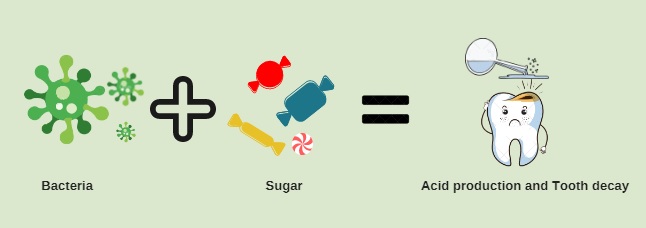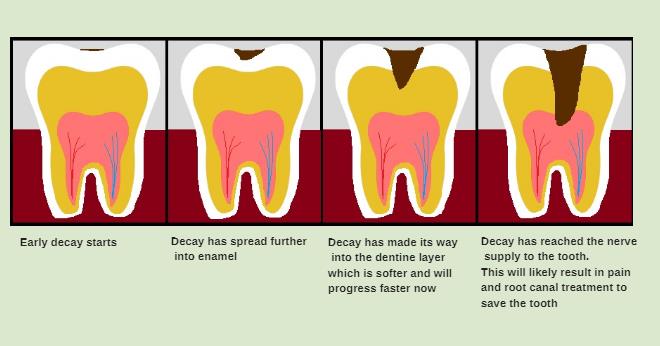With the season for treats and chocolate gifts approaching we just wanted to provide a bit of information on tooth decay to our patients. So you can enjoy Christmas without the toothache in January.
Tooth decay and erosion can occur when we have high sugar diets.
It’s not the sugar itself but the chain reaction in the mouth that occurs after eating.
Your mouth is an ecosystem containing hundreds of bacteria, many of which are friendly!
However there are some that actually feed on the sugar you eat and release acids which destroy the tooth enamel. The tooth enamel is that white shiny layer of the tooth. Teeth are mainly composed of calcium, phosphorus and other minerals and if you remember from chemistry lessons at school acids dissolve many substances.
Below is the formula for tooth decay.
If sugar habits don’t change, tooth decay will progress further and further. You will be essentially feeding the bacteria, and the more you feed them the more acid production there is. The diagram below shows the progression of decay.
So how can you reduce sugar intake and prevent decay?
Simply cut down on chocolate, sweets, fizzy drinks and fruit juices, also check the label of other food as there are many hidden sugars within foods such as crisps and ketchup.
http://www.healthyfood.co.uk/wp-content/uploads/2016/02/How-to-cut-hidden-sugar-guide.pdf
Reduce the frequency, if you do feel the need for a bar of chocolate after a hard day at work then eat it in one go, if you eat 12 individual pieces throughout the day you are actually increasing the frequency of sugar and the number of acid attacks in the day.
Also drink water after to help neutralise the PH in your mouth.
Early decay can be prevented by also applying fluoride toothpaste topically. Your dentist can show you the specific areas and how to do this effectively.
Book in for your six monthly check up so that early decay can be spotted by the dentist.

